Apply now to join our next cohort of Community Science Fellows and Community Leads!
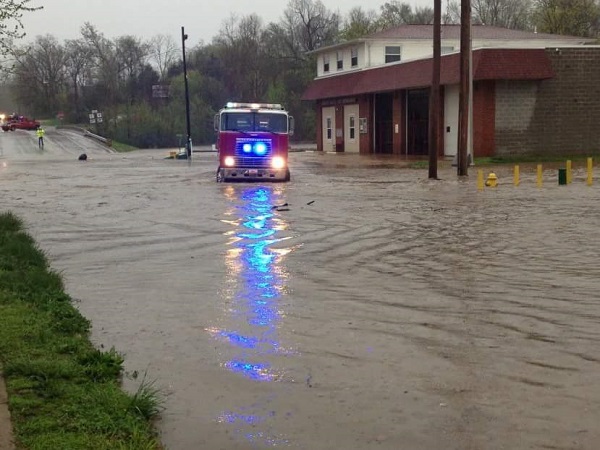
The Team
Susan Liley, Citizens’ Committee for Flood Relief, [email protected]
Paula Arbuthnot, Citizens’ Committee for Flood Relief, [email protected]
Robert Jacobson, United States Geological Survey, [email protected]
Susannah Erwin, United States Geological Survey
Dan Hanes, St. Louis University, [email protected]
Amanda Cox, St. Louis University
Results
The objective of this project was to help build the capacity of 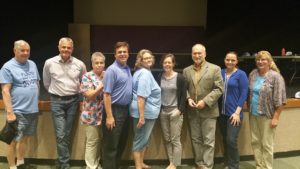 Citizens’ Committee for Flood Relief (CCFR) on the topic of flood risk reduction in De Soto, MO. The team of scientists from USGS and St. Louis University acted as a sounding board for CCFR and the community by providing expert opinion on flood risk, floodplain management, and flood-risk reduction strategies. The science team worked closely with CCFR in the following ways:
Citizens’ Committee for Flood Relief (CCFR) on the topic of flood risk reduction in De Soto, MO. The team of scientists from USGS and St. Louis University acted as a sounding board for CCFR and the community by providing expert opinion on flood risk, floodplain management, and flood-risk reduction strategies. The science team worked closely with CCFR in the following ways:
Project Outputs:
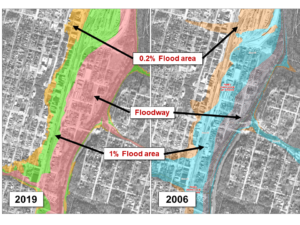
Project Impacts:
The impact of this project was very significant for CCFR members and De Soto residents. Specifically:
Reflections
From this project, others may learn better ways to partner with Thriving Earth Exchange for their own purposes. For instance,
The team noted that the following contributed to the success of the project:
However, there were a few key things that the team would do differently if they had the chance to do this project again:
To other teams currently pursuing Thriving Earth Exchange projects and for those that anticipate doing a Thriving Earth Exchange project, the team recommends:
Situated a little over 40 miles southwest of St. Louis, Missouri, the City of De Soto has experienced 4 major floods in the past 5 years. Residents have witnessed Joachim Creek, a tributary to the Mississippi River, flood more frequency in 2012 after the city built a bridge over the creek and the Missouri Department of Transportation raised the road next to the bridge. There are many artesian wells that empty into Joachim Creek and changes taking place in the surrounding subdivisions. When it rains, Joachim becomes a flashy creek, causing houses and the main street of town to flood. Since 2003, three lives were claimed in storms and the health, safety and welfare of both citizens and first responders put at risk. Residents feel hopeless because they do not have the means or interest to relocate and few outside experts have offered to develop solutions to the flooding. Past studies of Joachim Creek are outdated and of little use.
Citizens’ Committee for Flood Relief (CCFR) was established to work alongside city, county, state and federal government to implement solutions and adopt methodology to reduce the impact of flood damage, both structural and non-structural. The flood group has a state representative who serves as an advocate for them. CCFR has 10 active members with about 15 that attend their monthly meetings and a larger following on Facebook. One of their major goals is to establish safety systems such as detectors that will be triggered at nearby firehouses as early warning systems.
This project has been conceived and designed in partnership with community leaders at CCFR and Flood Forum USA.
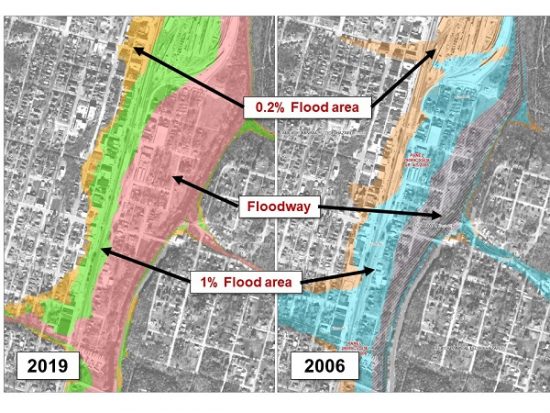
Image caption: Updated flood maps for De Soto, MO. Courtesy USACE St. Louis District. (Click here for full-size image)
By Paula Arbuthnot
Paula Arbuthnot is co-founder of Citizens’ Committee for Flood Relief and serves as a community lead for a Thriving Earth project in De Soto, Missouri. On June 6, 2019, The Army Corps of Engineers St. Louis District released a preliminary draft of a Floodplain Management Plan for Upper Joachim Creek.
Yes, this article is meant to be a ‘social impact statement’.
Susan Liley and I have been working this Joachim Creek flash flood issue since December of 2015. Here it is June, 2019, and we are just now – finally! – getting the preliminary results of the Army Corps of Engineers Floodplain Management Plan. And civilian involvement – learning to ask to be a ‘major stakeholder’ – was new to the Corps’ experience, since that role is usually limited to the government bodies, not a Citizens’ Committee. Getting the river gauge as an early warning system was a great achievement with the help of the USGS (Paul Rydlund) to implement that program. Whew!
We knew our situation was bad, but the Corps conservatively doubled the afflicted flood area and doubled the number of homes/businesses involved. Our Thriving Earth Exchange hydrologists (Robb Jacobson, Dan Hanes, and Amanda Cox) rendered their opinions that the Corps numbers didn’t go far enough – and I believe they are right. As an engineer, I have helped my own clients with one dimensional HEC-RAS (Hydrologic Engineering Center – River Analysis System) model studies, assisted in filling out flood elevation certificates, and attended Certified Flood Plain Managers’ school. I know enough that a 1-dimensional flood model is only an educated guess (in my humble opinion), so we are already campaigning for a second phase involving a two-dimensional model flood study.
The Army Corps of Engineers is not really accustomed to being second-guessed on their results and it was sorely needed. I don’t blame them, really, since their regulations limit the methodology they are allowed to use. But technical expertise and third-party verification of the results is paramount to the success of your own studies for planning purposes. DeSoto has made some new civil engineering history, we have created some new science in the process, and our success – if and when that happens – is being watched carefully. Our studies will be used to develop a new modeling technique along with a new way to interact with the civilian communities at large. Already, what we have accomplished in our community will be incorporated and applied to the Meramec River Flood Study, approximately three months behind us.
I am writing this article on the eve of potentially the second highest recorded flood on the Mississippi River with more rain predicted for the next five days. A few levees have already failed. This will be the fourth major flood of the Mighty Miss that I have seen in my lifetime of living in river communities. At times, I feel overwhelmed by it all.
But Susan, as the heart of the Citizens’ Committee, has been rallying the troops, the government leaders, and the residents, grabbing their attention and demanding that we see it through to completion, whatever that may look like. She, more than anyone else I know, has demanded that we can and should do better. This whole experience has been life altering for me in a career that has already been fulfilling. But Susan reminded me about the need for changing our futures – she has taught us all to look for a better day ahead and not be afraid of getting it done.
You see, when you think about it, the scientists have been warning us for years about climate change. The human population has gone through stages of denial and ignoring the issue, especially when we believe that that one individual can’t accomplish much on a larger scale. The politicians have been slow to embrace the needed changes, scared of what that would do their sphere of influence or local economies. We older people even tried throwing up our hands, worried about the mess we have left for our kids to clean up. To me, this sounds like the five stages of grief until finally reaching acceptance. But, this time, acceptance is not enough and the engineer in me says it is now time to get up and “Fix it.”
Thank you, Susan, we needed to hear that.
We have a big, big job ahead of us – don’t be afraid of the odds. Now, it is time to have faith, hopefully work for a brighter future, and be joyful in our efforts. Do it in the name of love, if you have to, but keep telling yourself and the folks around you, that we can ‘turn this around.’
Community Leads
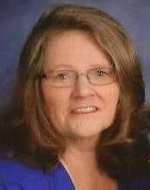
Susan Liley is a Co-Founder of Citizens’ Committee for Flood Relief and is passionate about making a difference for her neighbors and the residents of De Soto. She works hard to preserve the heritage of the city while encouraging others to incorporate flood resilience measures wherever possible.
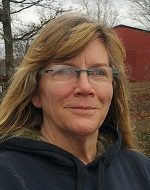
Paula Arbuthnot is a Co-Founder of Citizens’ Committee for Flood Relief and an engineer in the City of De Soto.
Scientific Liaisons
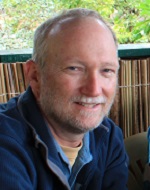
Dr. Robert Jacobson is a Supervisory Research Hydrologist with 34 years experience as a research scientist with the U.S. Geological Survey. He received his Ph.D. from the Whiting School of Engineering, The Johns Hopkins University, in 1986. His research area is in riverine habitat dynamics with an emphasis on large-river ecosystems. Dr. Jacobson is the Chief of the River Studies Branch, Columbia Environmental Research Center, Columbia, Missouri. He leads an interdisciplinary team of physical and biological research scientists engaged in studies to inform large-river restoration strategies, endangered species recovery, invasive species management, and urban stream assessments
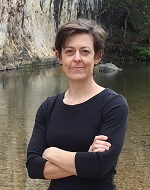
Dr. Susannah Erwin is a Research Hydrologist with the U.S. Geological Survey. Her research focuses on applied water resources, with an emphasis on physical processes to inform river management. Her areas of expertise include sediment transport, river engineering, ecohydrualics, design and monitoring in river restoration, and field methods in hydrology. Dr. Erwin received her Ph.D. in Watershed Sciences and M.E. in Civil Engineering from Utah State University.
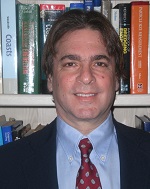
Dr. Dan Hanes (www.danhanes.com) is a scientist, educator, and consultant whose expertise is at the nexus of water, particles, and people. He has worked on topics related to coastal and fluvial erosion, sediment transport, flooding, sea level rise, environmental contamination, hydroacoustics, aquatic-safety, and granular flow. He has worked in academics, government, and small business, and is currently a Professor of Earth and Atmospheric Sciences at Saint Louis University.
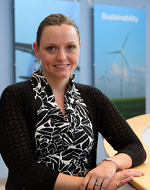
Dr. Amanda Cox is an Assistant Professor in the Civil Engineering Department at Saint Louis University (SLU). Her areas of research include surface-water hydraulics, urban drainage, erosion and sedimentation, hydraulic structures, river engineering, stream restoration, and stormwater erosion. Prior to joining SLU, she was a Research Scientist and Laboratory Manager at the Colorado State University (CSU) Hydraulics Laboratory where she completed numerous hydraulic modeling research projects. Dr. Cox received her BS degree in Civil Engineering from the University of Missouri – Columbia, and she received her MS and PhD degree in Civil Engineering from CSU specializing in Hydraulic Engineering.
This project is part of one of TEXs’ new cohorts. TEX has partnered with Flood Forum USA which supports grassroots flood groups across the country by helping them develop strategies for a sustainable future. TEX is working with ten of their grassroots groups to connect them with scientists who can help them better characterize neighborhood-level flood risks and work effectively with local decision makers to mitigate those risks.

(c) 2024 Thriving Earth Exchange